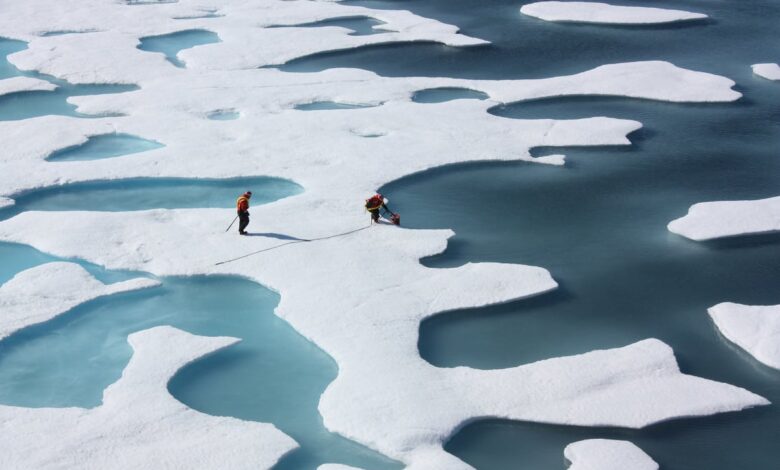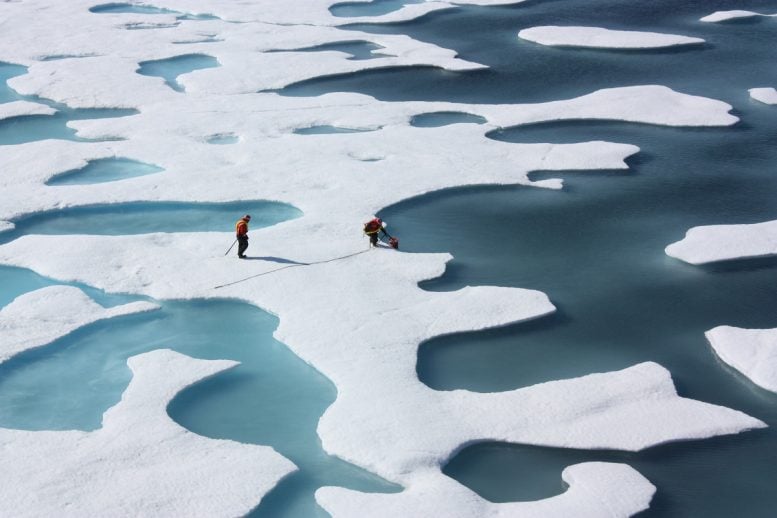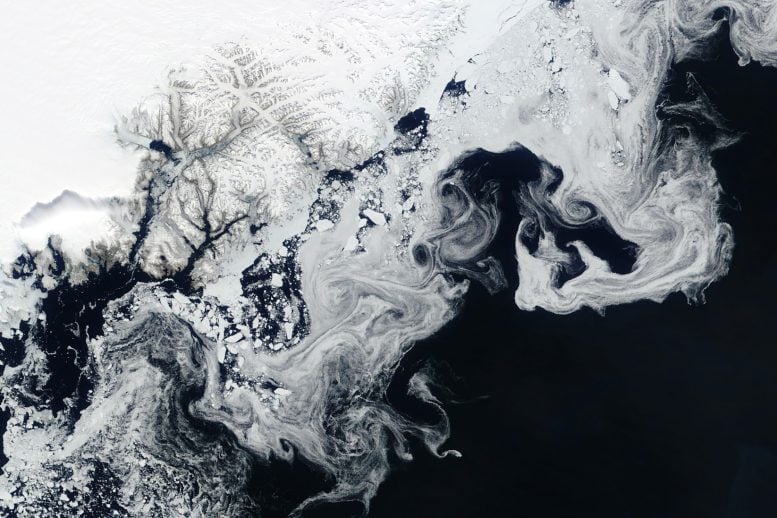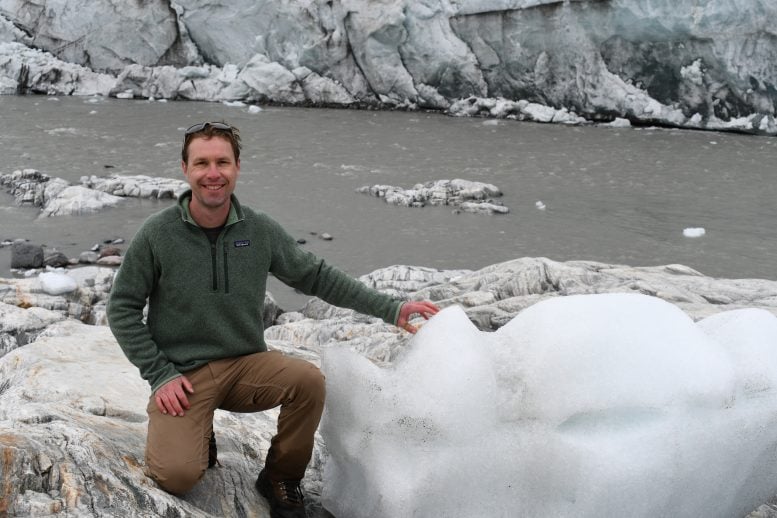Arctic’s Cooling Power Has Plummeted by 25%, Alarming Study Reveals


Melt ponds darken the surface of sea ice and reduce its cooling power. Credit: NASA’s Earth Observatory.
Changes in the melting patterns of Antarctica and the slushy condition of Arctic ice are driving global warming toward the upper limits predicted by climate models.
New research led by scientists at the University of Michigan reveals that the Arctic has lost approximately 25% of its cooling ability since 1980 due to diminishing sea ice and reduced reflectivity. Additionally, this phenomenon has contributed to a global loss of up to 15% in cooling power.
Using satellite measurements of cloud cover and the solar radiation reflected by sea ice between 1980 and 2023, the researchers found that the percent decrease in sea ice’s cooling power is about twice as high as the percent decrease in annual average sea ice area in both the Arctic and Antarctic. The added warming impact from this change to sea ice cooling power is toward the higher end of climate model estimates.
“When we use climate simulations to quantify how melting sea ice affects climate, we typically simulate a full century before we have an answer,” said Mark Flanner, professor of climate and space sciences and engineering and the corresponding author of the study published in Geophysical Research Letters.
“We’re now reaching the point where we have a long enough record of satellite data to estimate the sea ice climate feedback with measurements.”

In this view from the Terra satellite, chunks of sea ice appear as white swirls off the coast of Greenland. As the ice thins and darkens, it reflects less sunlight than solid ice sheets, speeding up global heating. Credit: NASA’s Earth Observatory
The Arctic has seen the largest and most steady declines in sea ice cooling power since 1980, but until recently, the South Pole had appeared more resilient to the changing climate. Its sea ice cover had remained relatively stable from 2007 into the 2010s, and the cooling power of the Antarctic’s sea ice was actually trending up at that time.
Antarctic Ice Stability and Decline
That view abruptly changed in 2016, when an area larger than Texas melted on one of the continent’s largest ice shelves. The Antarctic lost sea ice then too, and its cooling power hasn’t recovered, according to the new study. As a result, 2016 and the following seven years have had the weakest global sea ice cooling effect since the early 1980s.
Beyond disappearing ice cover, the remaining ice is also growing less reflective as warming temperatures and increased rainfall create thinner, wetter ice and more melt ponds that reflect less solar radiation. This effect has been most pronounced in the Arctic, where sea ice has become less reflective in the sunniest parts of the year, and the new study raises the possibility that it could be an important factor in the Antarctic, too—in addition to lost sea ice cover.

Mark Flanner, a professor of climate and space sciences and engineering, kneels next to a block of ice in Greenland. Credit: Mark Flanner.
“The changes to Antarctic sea ice since 2016 boost the warming feedback from sea ice loss by 40%. By not accounting for this change in the radiative effect of sea ice in Antarctica, we could be missing a considerable part of the total global energy absorption,” said Alisher Duspayev, doctoral student in physics and the study’s first author.
The research team hopes to provide their updated estimates of sea ice’s cooling power and climate feedback from less reflective ice to the climate science community via a website that is updated whenever new satellite data is available.
“Climate change adaptation plans should bring aboard these new numbers as part of the overall calculus on how rapidly and how widely the impacts of cryospheric radiative cooling loss will manifest on the global climate system,” said Aku Riihelä, research professor at the Finnish Meteorological Institute and co-author of the study.
Reference: “Earth’s Sea Ice Radiative Effect From 1980 to 2023” by A. Duspayev, M. G. Flanner and A. Riihelä, 17 July 2024, Geophysical Research Letters.
DOI: 10.1029/2024GL109608
The research was funded by the University of Michigan Rackham Graduate School and the Research Council of Finland.



